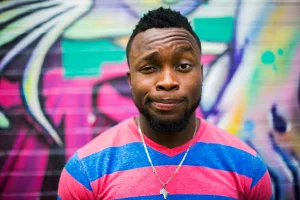The interplay between color and human emotion is a fascinating domain that extends far beyond mere aesthetic appeal. This deep-seated connection, ingrained in our psyche, influences not just individual moods but also collective behavior, making the understanding of color psychology crucial in various fields, from marketing to interior design. Colors communicate in a language without words. They can soothe, energize, uplift, or depress. The warm hues of red, orange, and yellow are often seen as invigorating and stimulating, sparking emotions ranging from warmth and comfort to anger and hostility. Conversely, the cooler tones of blue, green, and purple tend to calm and relax, yet they can also evoke feelings of sadness or indifference under certain circumstances.
Red: The Color of Dynamism
Red, with its inherent intensity, can increase heart rate and evoke a sense of urgency. This is why it’s frequently used in ‘action required’ contexts, like stop signs or sale announcements. However, its application needs careful consideration due to its potential to overstimulate or provoke aggression.
Practical Tip: When incorporating red into a space or design, consider using it as an accent rather than a dominant color. This approach can maintain its vibrancy without overwhelming the senses. In restaurants, for example, red is often used to stimulate appetite and energize the dining area, but it’s balanced with neutral tones to prevent it from becoming overpowering.
Blue: A Tranquil Presence
Blue, a favorite in many cultures, is cherished for its tranquil and stable essence, often used in bedrooms and healthcare facilities to create a serene atmosphere. Yet, its overuse can sometimes lead to feelings of coldness or melancholy.
Case Study: In an office environment, a company once painted its entire workspace in a light blue to promote calmness and focus. However, employees reported feeling detached and uninspired. By adding warm-colored artwork and plants, the space was revitalized, striking a balance that enhanced productivity while maintaining a soothing environment.
Green: Nature’s Embrace
Green, the color of nature, is synonymous with growth, harmony, and renewal. It’s no surprise that green spaces are associated with stress reduction and well-being. In design, green can revitalize a space, offering a refreshing and peaceful ambiance.
Example: Urban planners in several cities have increased green spaces in densely populated areas to improve residents’ mental health and community well-being. Studies show that access to green areas can reduce symptoms of depression and anxiety, highlighting the therapeutic power of this color.
Yellow: The Color of Optimism
Yellow, a bright and cheerful color, is often associated with happiness, optimism, and creativity. It can stimulate mental processes and generate a sense of energy. However, in overabundance, yellow can be overwhelming and may even provoke feelings of anxiety or agitation.
Practical Tip: Use yellow in spaces where you want to promote creativity and positivity, such as a home office or a craft room. Pair it with cooler tones like gray or blue to temper its intensity while maintaining its cheerful vibe.
Orange: Vibrancy and Enthusiasm
Orange, a blend of red’s passion and yellow’s joy, exudes warmth, enthusiasm, and vitality. Often used to draw attention and express energy, it is a color that can inspire and motivate. Yet, like its constituent colors, excessive orange can be too intense, sometimes leading to a sense of frivolity or superficiality.
Real-World Application: In retail, orange is often used in window displays to catch the eye of passersby. A clothing store might use orange accents to highlight sales sections, creating an inviting and energetic shopping environment that encourages customers to explore.
Purple: The Color of Luxury and Wisdom
Purple, historically associated with royalty and nobility, suggests luxury, wisdom, and spirituality. Its calming blue and vibrant red create a balance between stimulation and serenity, fostering creativity. However, darker shades can evoke feelings of melancholy and frustration.
Tip for Use: Incorporate purple in meditation or reading spaces to enhance a sense of introspection and tranquility. Pairing it with gold or silver accents can elevate its luxurious feel, making it ideal for lounges or creative studios.
Black: Power and Elegance
Black is often associated with power, elegance, and sophistication. It’s a color that can evoke strong emotions, from the formality and mystery to grief and negativity. In design, it can provide a striking contrast, offering depth and grounding to color schemes.
Design Insight: Black is frequently employed in modern and minimalist design to create a sense of depth and sophistication. When used sparingly as a contrast against lighter colors, it can emphasize clean lines and highlight architectural features.
White: Purity and Simplicity
White is synonymous with purity, cleanliness, and innocence in many cultures. It can provide a sense of space and clarity, but an overuse of white may lead to feelings of isolation or emptiness, reflecting a lack of warmth or personality.
Practical Advice: In small spaces, white can be used to create an illusion of more space and light. However, adding textures and warm accents like wood or textiles can prevent the space from feeling sterile or impersonal.
Gray: Neutrality and Balance
Gray is the quintessential neutral, often associated with formality, reliability, and maturity. It can serve as a stable background, promoting a sense of calm and composure. However, gray can also be perceived as dull or uninspiring if not paired or accented with other colors.
Design Tip: Combine gray with bright, lively colors like yellow or coral to create a balanced and inviting atmosphere. This approach works well in living rooms or offices, where a neutral backdrop is enhanced with pops of color for energy and interest.
Beyond Aesthetics: Color in Functional Spaces
In functional spaces, the strategic use of color can enhance productivity, facilitate learning, and even influence purchasing decisions. For instance, the vibrancy of orange can invigorate a fitness center, while the calmness of blue can enhance focus and productivity in an office setting.
Educational Environments: Schools often employ color strategically in classrooms to create conducive learning environments. For example, green and blue are used in study areas to promote concentration, while brighter colors like yellow and orange might be used in art rooms to stimulate creativity.
Psychological and Therapeutic Use
In therapeutic contexts, color can be a powerful tool. Chromotherapy, though a field still under scientific scrutiny, posits that different colors can help treat physical or emotional conditions, suggesting that our connection with colors extends into the physiological realm.
Therapeutic Spaces: In therapy rooms, soft hues like pale blues and greens are often employed to create a safe, calming environment. These colors help clients feel more at ease, facilitating open communication and emotional healing.
Navigating the Palette: The Personal and Collective Journey
While the general effects of colors are well-documented, personal preferences and cultural nuances add layers of complexity. What soothes one individual might irritate another, underscoring the importance of a nuanced approach in using color to influence mood and behavior.
Cultural Variations: In Western cultures, white is often associated with purity and weddings, whereas in some Eastern cultures, it’s linked with mourning and funerals. These cultural differences highlight the importance of considering context when using color in design or marketing.
Building a Personal Color Palette
Creating a personal color palette for your home or workspace can reflect your personality while enhancing the desired mood. Here’s a step-by-step guide to help you get started:
- Identify Your Goals: Determine what emotions or activities you want each space to promote. For example, you might want your bedroom to be restful and your kitchen to be energizing.
- Consider Lighting: Natural and artificial lighting can alter the perception of color. Test paint samples or fabric swatches in your spaces to see how they appear at different times of the day.
- Start with Neutrals: Use neutral colors as a base. These provide versatility and allow for easy updates with changing trends or personal tastes.
- Add Accents: Introduce accent colors through accessories like pillows, artwork, or rugs. These can be easily changed to refresh the space without a complete overhaul.
- Personal Touches: Incorporate colors that have personal significance or bring joy. This might include a favorite color or a hue that evokes a cherished memory.
Colors shape our perceptions and experiences, illustrating the profound and intricate connection between the visual world and our inner emotional landscape. Whether it’s the calming azure of a morning sky, the vibrant red of a blooming flower, or the lush green of a forest, the hues surrounding us are not just a backdrop to our lives but active participants in our daily emotional journey. Embracing the power of color can transform our spaces and, ultimately, our lives.




